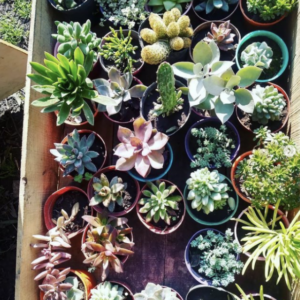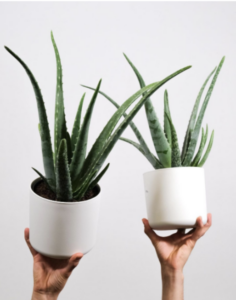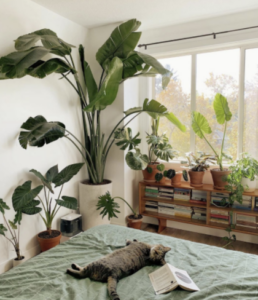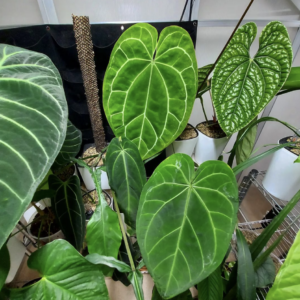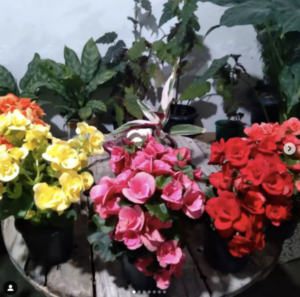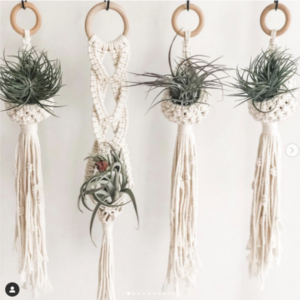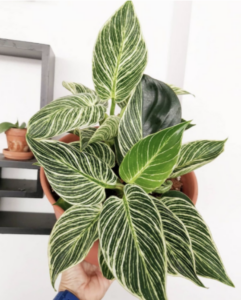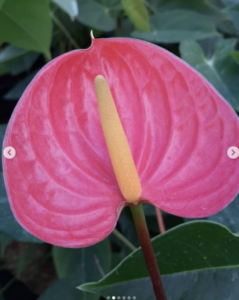
Household plants have always been an important part of many shelves, balconies and living rooms. Following lockdown however there was a plant boom as millennials fought to keep their connection to nature and now it’s all about the #plants on Instagram.
House plants appeal to younger generations particularly because they offer an opportunity to nurture something coupled with lower cost implications. The beauty of plants is that not only do they help us remain connected to nature, they also reduce our levels of stress and improve mood.
Why House Plants?
Plants have become so popular that they are recognised as the new pets for many ‘plant parents’. They have names and they’re part of the family.
Ancient civilisations used potted plants so this isn’t a new trend but growing plants indoors gained traction in the 17th century when new species of plants were introduced by explorers and sailors returning from their adventures.
The competition to introduce the most new plants was on and Britain imported species from all over the world, ultimately expanding the Kew Gardens home to the biggest botanical collection in the world. This inadvertently triggered the cultivation of indoor plants.
When nurtured in the right way houseplants can live for centuries. The oldest houseplant in the world lives in Kew Gardens and was brought over from South Africa back in 1775, this Eastern Cape giant cycad is now over 240 years old.
Which Plants are the Most Popular on Instagram?
JustServicesGroup.com was intrigued by the plant obsession surging across Instagram and researched the most Instagrammable plants of the moment. This is what they found:
- #cactus – 18,240,292
- #aloevera – 4,465,338
- #monstera – 2,742,426
- #philodendron – 1,702,614
- #eucalyptus – 1,661,163
- #begonia – 740,646
- #airplants – 704,610
- #calathea – 685,058
- #anthurium – 659,442
- #pothos – 653,636
- #peperomia – 406,762
- #snakeplant – 377,792
- #fiddleleaffig – 344,393
- #bromeliad – 280,779
- #spiderplant – 231,255
- #africanviolet – 225,816
- #peacelily – 187,569
- #stringofpearls – 186,662
- #hoyaplant – 184,624
- #stringofhearts – 184,047
- #zzplant – 153,501
- #prayerplant – 149,654
- #rubberplant – 131,432
- #jadeplant – 125,728
- #croton – 121,181
- #staghornfern – 119,634
- #swisscheeseplant – 98,801
- #chinesemoneyplant – 63,081
- #elephantearplant – 56,861
- #maidenhairfern – 50,063
- #englishivy – 41,548
- #polkadotplant – 41,239
- #chineseevergreen – 37,929
- #basilplant – 35,389
- #nerveplant – 35,164
- #zebraplant – 32,470
- #arrowheadplant – 29,943
- #mothorchid – 27,359
- #roseplant – 26,586
- #ponytailpalm – 26,305
- #bambooplant – 25,050
- #birdsnestfern – 24,532
- #rexbegonia – 23,606
- #bonsaiplant – 19,036
- #umbrellaplant – 17,517
- #birdofparadiseplant – 16,574
- #rattlesnakeplant – 13,191
- #cornplant – 12,145
- #peacockplant – 8,436
- #castironplant – 4,678
Cactus
Cactuses lead the way with over 18 million posts. They are part of the Cactaceae family which is made up of approximately 127 genera with 1750 known species. Almost all cactuses are succulents which means they have thickened parts that have adapted to store water more effectively.
@viveroplantasdelpilar
Aloe Vera
Aloe vera is in second place with almost 4.5 million posts. Aloe vera is a succulent plant species from the genus Aloe which has 500 species. Aloe is considered to be invasive in many world regions. Originating from the Arabian Peninsula and wild growing, aloe vera is commonly known to be used for healing the skin.
@feey.pflanzen
Monstera
Monstera otherwise known as the Swiss Cheese Plant are easy to care for and reward you with beautiful leaves with unique hole formations. Monsteras enjoy indirect light but can also thrive in fluorescent lights. They are climbing plants so will want space to explore as they grow.
@sisiliareads
Philodendron
There are two types of philodendrons, climbing and non-climbing. Their leaves are glossy and large and are part of hundreds of species of foliage plants. The climbing variety can grow several feet and requires a support structure whereas the non-climbing variation does quite well in a pot.
@t0mmj
Eucalyptus
Eucalyptus originated in Australia and has multiple medicinal uses because it is high in antioxidants, can relieve cold symptoms, may treat dry skin and can promote relaxation. Eucalyptus is a fast growing evergreen plant whose foliage often accompanies flower arranging.
@paloma.design
Begonia
Begonia grows quickly and showboats with pretty foliage and flashy flowers. They are a big focal point because of their colouring and need moist soil that isn’t too wet for them to thrive. The Begoniaceae family contains more than 2000 different species!
@zb_dona_flor
Air Plant
Air plants are cool. They are unique with their scifi leaves and their ability to survive in just air! What sets them apart is the fact that out in nature they grow on other plants. There are hundreds of species and different varieties ranging from silver foliage to colourful species that have coral leaves.
@macramebymindy
Calathea
Sometimes called the prayer plant as they are related to the maranta plant, calathea belongs to the Marantaceae family. The topside of the leaves have intricate details with varied shades of green with the undersides of the leaves a deep red colour.
@greenerystory
Anthurium
Anthuriums like to live in well lit areas but aren’t fans of direct sunlight. Popularly known as the flamingo flower or laceleaf, anthurium is usually found in the wild in the warmer areas of South America and the Caribbean.
@southseaorchids
Pothos
Pothos or Devil’s Ivy is easy to care for but it is poisonous. It is a beautiful trailing vine with unique heart shaped leaves and prefers low light and infrequent watering. Out in the wild you will find pothos in south-east Asian forests predominantly.
@piagravelund
